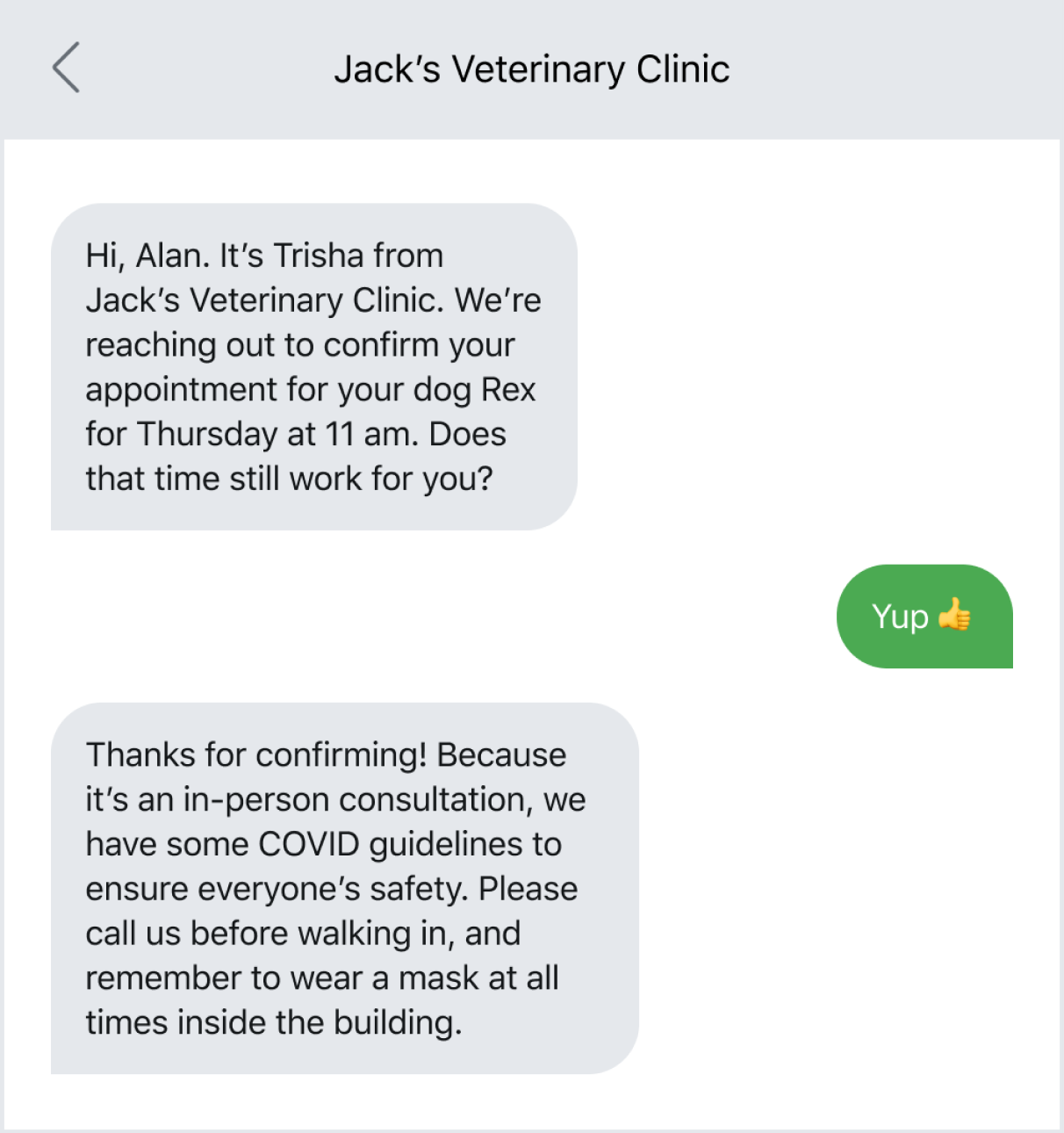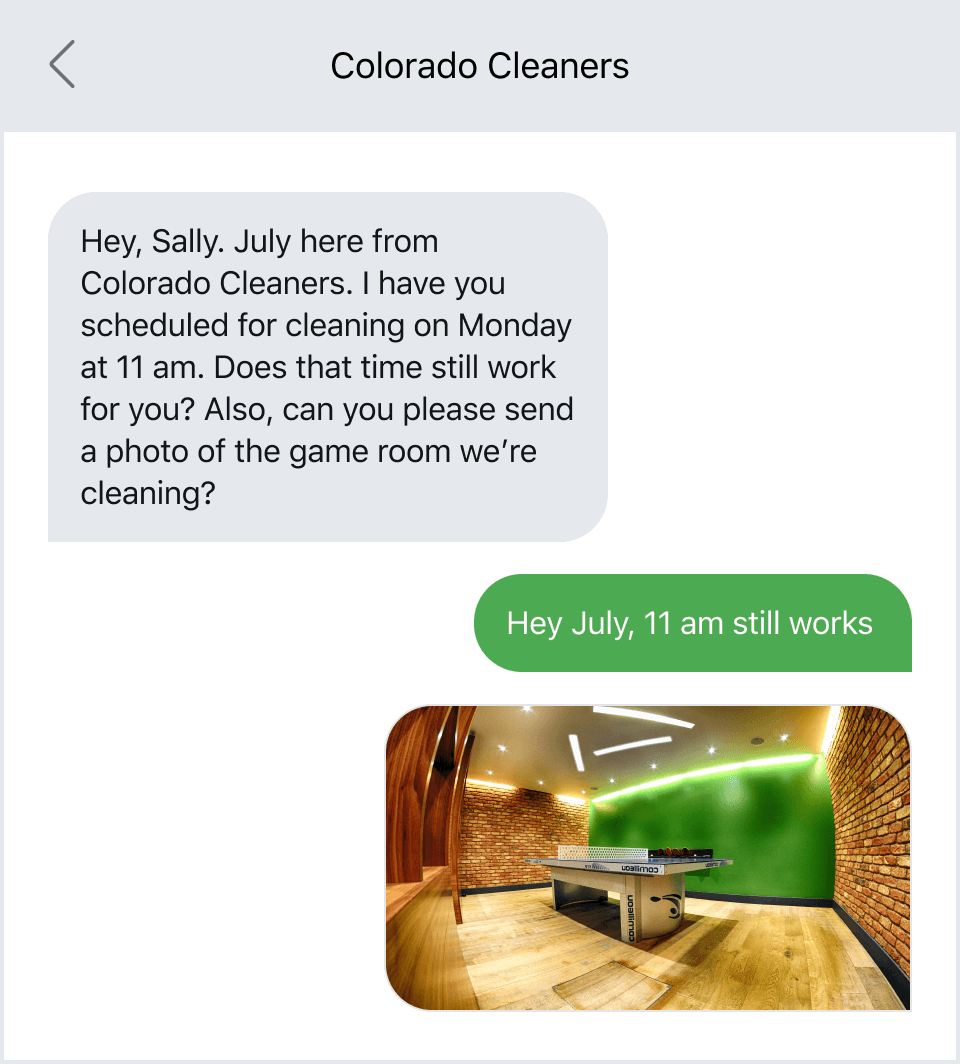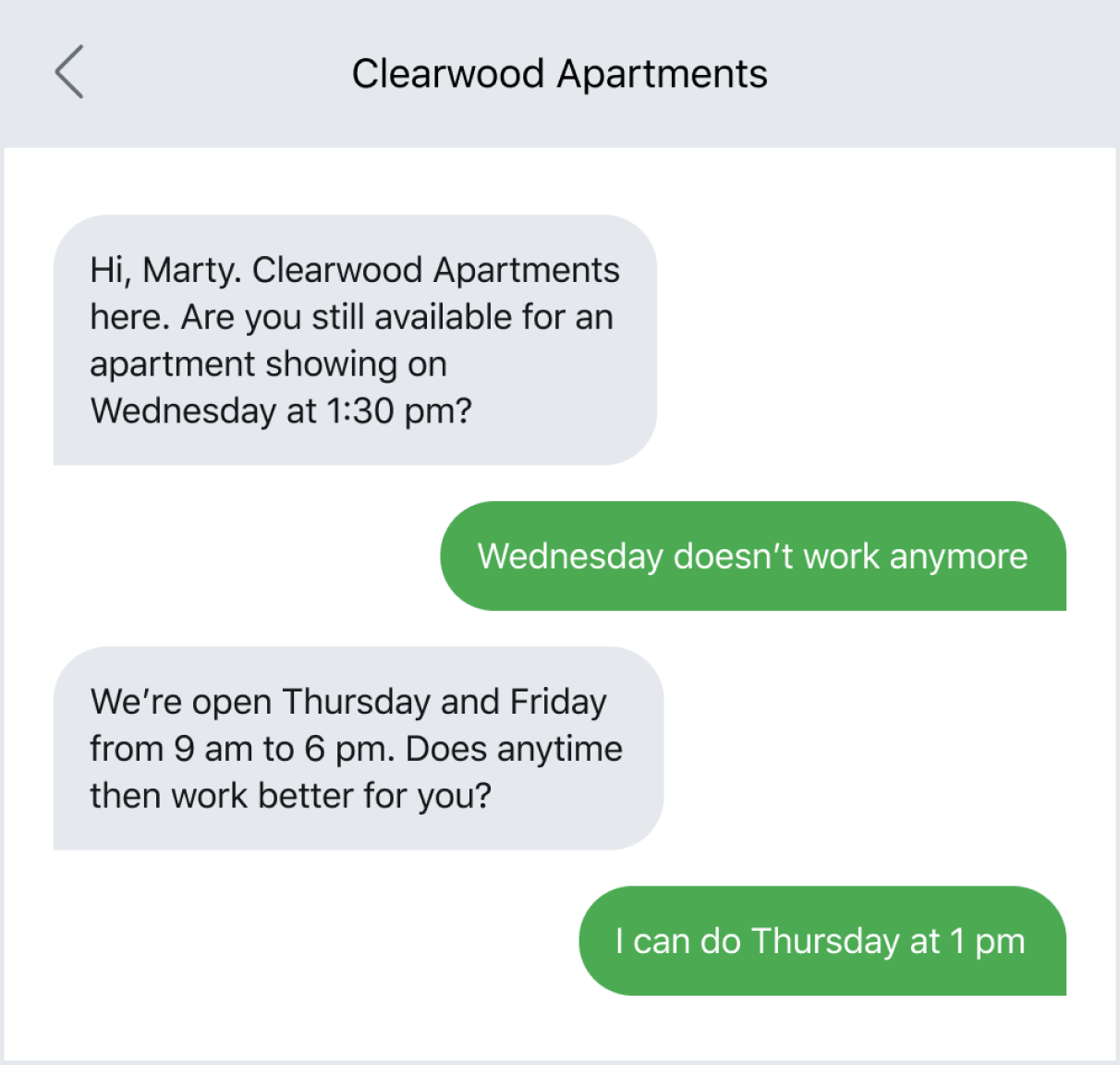Appointment no-shows are a costly endeavor for any business, no matter the industry or size. One study found that no-shows cost the U.S. healthcare system more than $150 billion a year in the medical field alone. Businesses still have to pay their staff and other bills to keep the doors open — regardless if an appointment happens or not. That’s why it’s crucial to prevent a no-show any way you can to save on unnecessary expenses.
Business texting is an efficient tool a company can use to cut back on no-shows because it allows a back-and-forth between the sender and recipient. Because customers can respond to a text, it is easier to reschedule no-shows if they can’t make their initial appointment anymore. As a general rule of thumb, you should send a follow-up a few days to a week before the meeting if scheduled in advance, so people have time to rearrange their calendar. For recently scheduled appointments, a same-day text message can work as long as it leaves enough time for a reply (i.e., a morning text for a scheduled evening appointment.) Keep in mind the dos and don'ts of sending texts and the general SMS etiquette you should follow when texting customers or patients.
The DNA of an appointment confirmation text
The first goal of sending a text appointment confirmation is to elicit a response — regardless of if it’s a yes or no answer. That’s because any reply is better than none. If you receive an appointment confirmation, that’s great! If not, you can reschedule the appointment or cancel it and give that time slot to a different person. After all, the response rate from texts is pretty high, at 45 percent. But before we dive into that, let’s cover the DNA of a text message.
When sending a text to confirm an appointment slot, you want to make sure your text is detailed enough to generate trust but not too intricate to where people don’t read it and miss out on valuable information. In short, your message should have the following information:
- Recipient name
- The name of your business (or yourself)
- Date and time of the appointment
- Location or contact info
You should also end your text with a call to action in the form of a question, such as “are you still available for this time?” You want to have your CTA in the form of a question to clearly and directly ask your prospect for a response.
Your second goal is to send relevant follow-up information. Remember, even if a person confirms an appointment, it’s not written in stone that they’ll show up. A follow-up text’s importance is to give them more information about the appointment to make it easier for them not to miss it.
Getting a confirmed “yes”
The ideal outcome of sending a text is to get an appointment on the calendar confirmed. If you receive an appointment confirmation, now is your chance to follow-up with relevant information or questions to increase the likelihood of getting the appointment completed. (It’s not off the books until the job is done!)
The goal is first to get a response and then send additional information as needed. Let’s go over the different scenarios in which you can use a follow-up text to bind a person to their appointment time.
For physical appointments
The following examples demonstrate how a business can use texting to send follow-up information on an appointment at a physical location. Texting follow-ups regarding a physical appointment can lower any confusion the customer may have when getting to your office.

Texting PDFs is a great way to provide more instructions on the next steps while saving space in a message. This is especially useful if the directions are a bit more complicated. In the following example, someone from a security staffing agency confirms a shift before using a follow-up text to send location information to a concert venue.

Some companies may also need to share special instructions regarding an event or appointment, whether in person or not. For example, some businesses may have guidelines for how they’re handling social distancing amidst the pandemic.

For a call or virtual appointment
Using business texting for virtual meetings can give prospects a convenient place to ask questions or reach out immediately. It’s essential to have a point of contact since virtual meetings lack an office receptionist who can help guide a person who answers any questions. Here are some ideas on how you can use business texting to follow-up with someone who has an appointment scheduled to occur virtually or over the phone.
In this text conversation, an HR recruiter uses business texting to confirm a phone screening and share more details on what the call will look like. If a prospect needs help, text is a great way to extend that conversation because it is a two-way communication method.

Non-profits, or other organizations, can use business texting to confirm attendance at virtual events. They can also follow up with a link to the event and include more information regarding the occasion.

Asking for pre-qualifications
Many appointments require pre-qualifying documents or actions a person needs to finish before the said appointment can occur. The following examples cover a few ways businesses can use a text follow-up to communicate these needs.
In the next example, a mortgage company uses a text follow-up to remind their customer that they need specific documentation on-hand to complete the appointment.

Delivery companies can use texting to confirm deliveries and communicate with customers before and on the delivery day.
.png)
Asking relevant questions
Like those in the home service industry, businesses may need to use texting to ask essential questions closer to the job’s time. Text is a convenient place to ask these types of questions because they have a 90 second response time, compared to other communication channels that can take several hours for a reply. Here are some examples of different home service businesses using texting to do such.
Home service businesses can use business texting to coordinate parking with a customer. This is especially helpful to avoid conflict with neighbors or the customer themself and ensure a better customer experience.

Like Colorado Cleaners in the example below, businesses can use texting to ask for photos of the area they’re scheduled to work on or clean. Asking for photos over text can get the prospect more bought-into the appointment.

Getting a declined response
If you text someone to confirm an appointment but receive a response that declines their original time, don’t stress too much! There are two things you can do in this instance. First, you want to ask to reschedule the appointment immediately. The hope is that the person still needs the meeting; it’s just the original time that doesn’t work anymore.
Here is an example text message scenario that tries to reschedule a declined appointment time:

If the person above declined to reschedule, then the second thing you can do is find a new person to fill the slot. While appointment cancellations aren’t fun, they’re better than no-shows. On the bright side, at least now you know you need to find someone else to claim that spot.
No response
In the unfortunate case you don’t receive a reply to your initial text, you can try reaching out again via text or through another medium like email or a phone call.
Typically, no reply is an indication that a person won’t show up to their appointment. One way to claim the allotted time back is to let people know that no response to a text is equivalent to an appointment cancellation. It’s better to send this message after you’ve already attempted an initial follow-up. Take a look at the following text example to get an idea of how you can keep your calendar in your control with an automatic cancellation.

Like in the beauty salon example, businesses can require a response within a specific time frame (after sending an initial follow-up text), or they’ll cancel the appointment. This works best for companies who have a high demand and can easily schedule an appointment with someone else.
The bottom line
While texting to confirm an appointment can’t guarantee there won’t be a no-show, it can significantly reduce one’s chances by buying people into their commitments more. The real goal of confirming appointments is to know that your calendar is an accurate representation of the revenue you hope to earn, so don’t get too discouraged over declined events.







